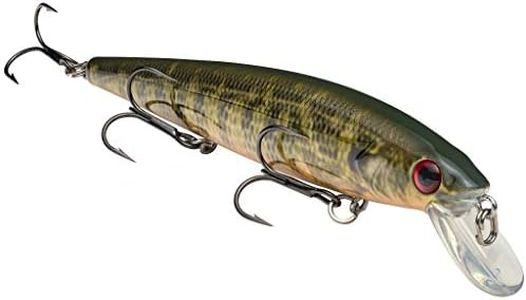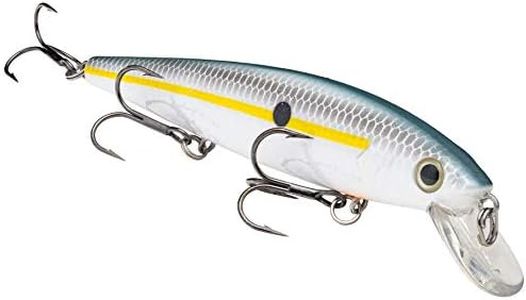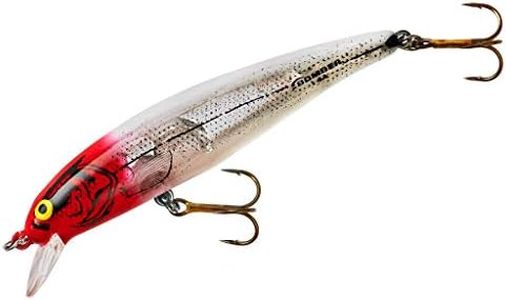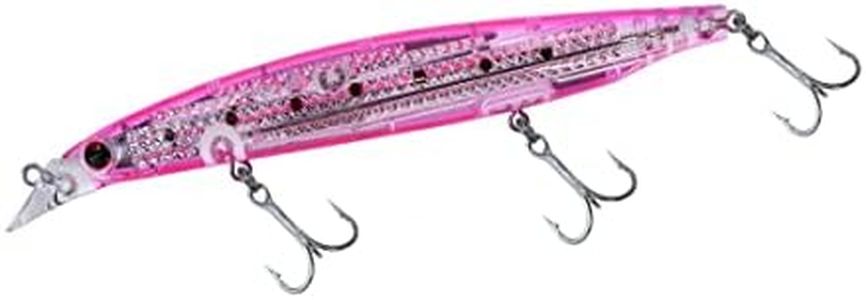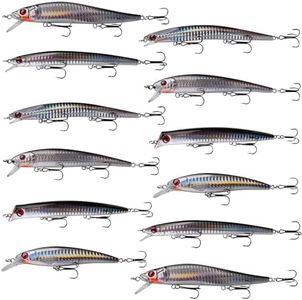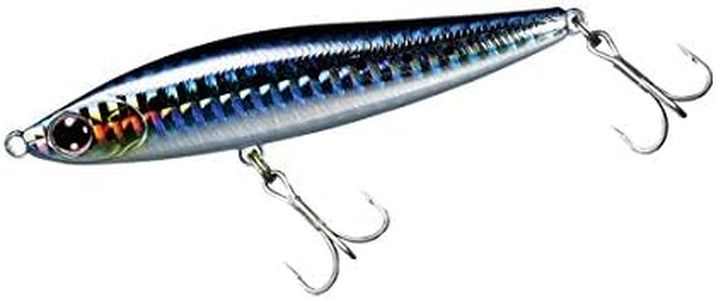We Use CookiesWe use cookies to enhance the security, performance,
functionality and for analytical and promotional activities. By continuing to browse this site you
are agreeing to our privacy policy
10 Best jerkbaits
From leading brands and best sellers available on the web.Buying Guide for the Best jerkbaits
Jerkbaits are a type of fishing lure that are especially popular for catching predatory fish like bass, pike, or walleye. When shopping for jerkbaits, it's important to match the lure to the conditions you'll be fishing in and the species you're targeting. Key factors to consider include the size and weight, running depth, buoyancy, action, and hook quality. Understanding these specifics will help you choose a jerkbait that will not only attract your intended fish but also suit your style of fishing and environment.Size and WeightThe size and weight of a jerkbait refer to its length and mass, which determine how big a fish it will attract and how far you can cast it. Lighter and smaller jerkbaits are ideal for targeting smaller fish or fishing in calm waters, while heavier and larger options are better for casting longer distances, handling wind, or targeting bigger fish. To pick the right one for you, think about where you'll be fishing and the size of fish you’re aiming for—smaller sizes work well in ponds or for smaller species, while larger, heavier jerkbaits suit bigger water bodies and bigger fish.
Running DepthThis describes how deep the jerkbait travels when you retrieve it, which is determined by its lip design and shape. Shallow-running jerkbaits are best when fish are feeding near the surface or in shallow water, while deep-diving models are used when fish are located farther down. To choose the right running depth, consider the typical water depth you fish in and where you believe the fish will be—match the jerkbait’s depth range to the depth at which fish are swimming.
BuoyancyBuoyancy tells you whether the jerkbait floats, suspends, or sinks when at rest. Floating jerkbaits rise to the surface when you pause them, suspending ones stay at the same depth, and sinking jerkbaits slowly drop. Floating models are better for fishing over obstacles or in shallow water, suspending jerkbaits are great when fish are mid-water, and sinking varieties help when you need to reach deeper fish. Think about your usual fishing spots and how you like to retrieve your lure—choose buoyancy based on whether you want the bait to pause, rise, or sink between jerks.
ActionThe 'action' of a jerkbait refers to how it moves in the water when you jerk or retrieve it. Some jerkbaits have a wide, erratic action while others offer a tighter, subtler motion. Erratic action is excellent for triggering strikes from aggressive fish or in clear water, while subtler actions can be more effective when fish are finicky or water is murky. Consider how actively the fish are feeding and how much visibility there is—choose an action that mimics local baitfish and matches the mood of your target species.
Hook QualityHook quality describes how sharp, strong, and durable the hooks on the jerkbait are. High-quality hooks increase your chances of successfully hooking and landing fish. If you often catch larger or toothy fish, you’ll want stronger, corrosion-resistant hooks. For smaller fish or gentle catch-and-release, finer hooks may be enough. Always make sure your jerkbait comes with strong, sharp hooks, or be prepared to upgrade them to fit your fishing needs.
